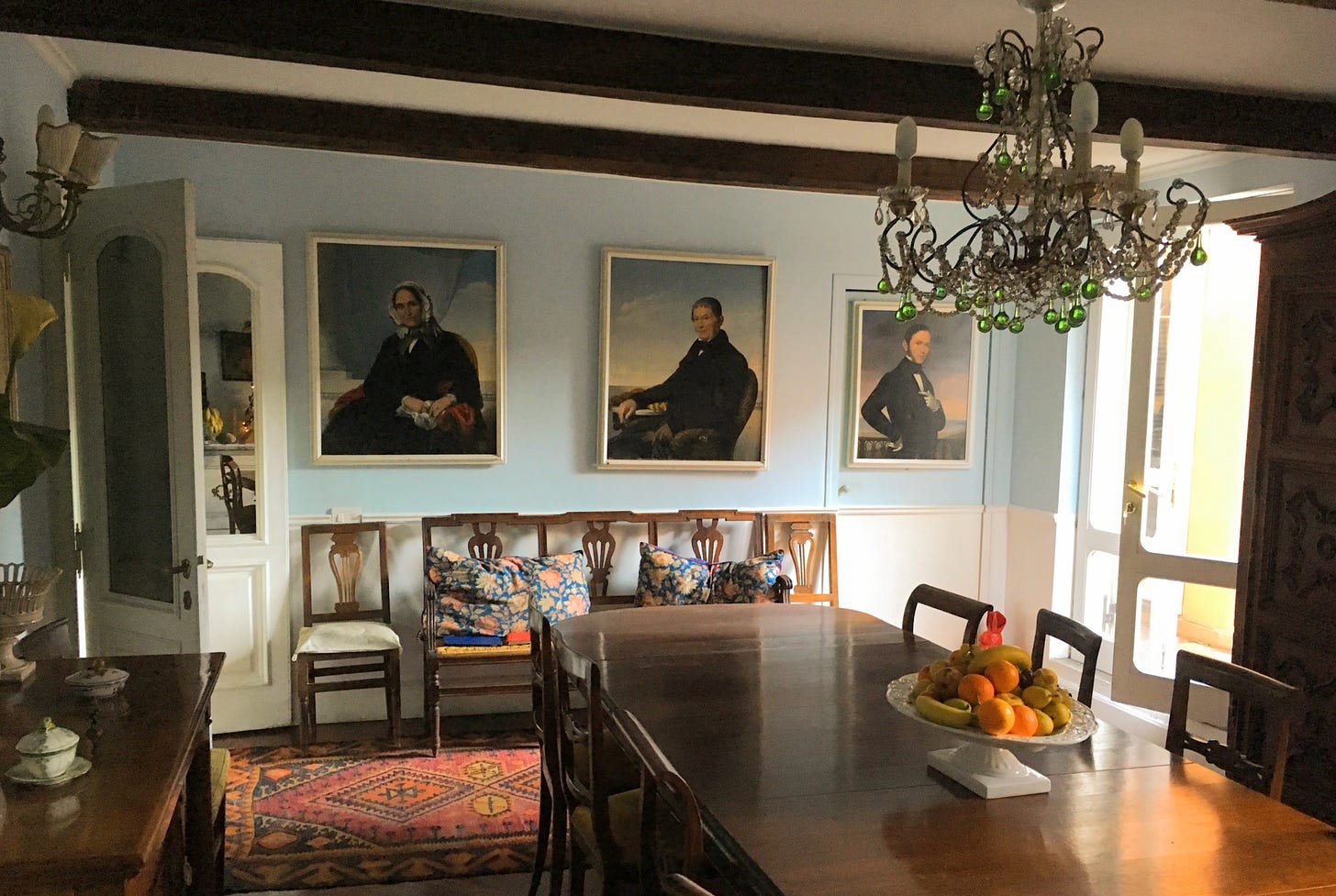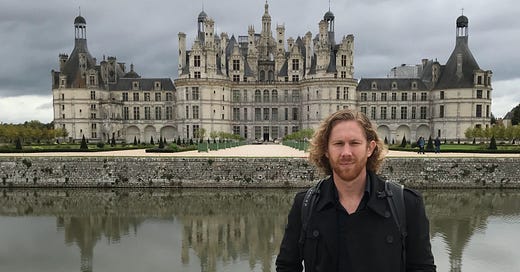Thanks for checking out Nuclear Meltdown. Subscriptions are the fuel that powers this newsletter blog, so if you haven’t already, considering signing up.
This week I want to talk about this post from the newsletter Construction Physics. The post is part of author Brian Potter’s running thought experiment on how to build a house that will last 1,000 years.
Potter gets into the nitty gritty calculus of how to make a building last, and he points out that today’s short-lived buildings (most new homes today will be lucky to make it a few decades, let alone centuries) are a historical aberration. Medieval houses, for example, would often last for hundreds of years. It’s also worth noting that architects such as the great Steve Mouzon1 have argued that the greenest and most environmentally friendly building is the building that already exists2.
But those issues aside, who cares? What’s the point, really, of trying to build something that lasts a really long time?
I’ve long dreamed of building something like an ancestral home that could last for a really long time, and I think my answer to those questions comes in two parts. First, housing is a major expense for most people, meaning that a long-lasting house has the potential to be a massive economic benefit to subsequent generations. Imagine how much less stress and more freedom you’d have if you simply didn’t have to pay for a home. I’d love to bequeath that kind of safety net to my children and grandchildren.
But second and more importantly, a building is a conversation with the past. It conveys a whole set of values and world views. And a house that lasts a long time lets each generation literally retrace the steps of the people who came before.
Let’s break these ideas down briefly. The first point, about the financial benefits of a generational house, is pretty obvious. However, it’s worth noting here that the number of Americans who are “cost burdened” by housing is going up. Being cost burdened means you pay more than 30% of your income on housing. And last year, the National Low Income Housing Coalition found that as of 2017 “48% of renter households were cost burdened, paying more than 30% of their household income on rent. This is a six-percentage point increase from 2001.” Harvard has an interactive map that breaks down how different parts of the country are doing, but the takeaway here is that there are a lot of people who are paying a lot of their money on housing, and that trend seems to only be getting worse. As a parent, I would like to do whatever I can to help my kids avoid being cost burdened in the future, and simply letting them take over the family home strikes me as a pretty straightforward way to do that (albeit a difficult one if you don’t start out rich).
More than finances, though, I’m interested in what I’ll call the metaphysical benefits of a long lasting home. My own house offers a useful case study; though I’ve only lived here for a year and a half, the house is 120 years old and was built during the late Victorian period. As a result, the rooms are relatively small and the ceilings are very tall because those features made it easier to heat and cool in extreme weather. The small rooms and lack of an open floor plan also reflect the Victorians’ ideas about social activities. They believed, for instance, that kitchen activities, dining activities and living room activities should be separate. Similarly, the first floor of my house makes up the “public space,” with rooms where you might receive visitors, while the second floor comprises the domestic space — which is also a reflection of the way Victorian home builders envisioned people separating the different spheres of their lives.
The interesting thing about living in an old house is that it sort of forces you to behave according to its design. When people come over, for instance, we tend to hang out around the dining room table, not around a kitchen island as tends to happen in open floor plan homes. The public rooms are also oriented around fireplaces and there’s no natural place to put modern appliances like TVs. So, those things had to go in a different part of the home. The house injects a little bit of the Victorian worldview into my day to day life.
My house is a conversation between me and some strangers who built it a century ago3. But I have been fortunate enough to visit some very old homes in Europe that have been in the same family for centuries. And it’s always fascinating to hear about how and why the houses acquired their current forms. On my last visit to Rome, for example, I visited both a Renaissance palace and a relatively modest family home in the Trastevere neighborhood. Both evolved over centuries to meet the changing needs and values of their respective families — values that remained important parts of those families’ identities.

I want to circle back around here to Potter’s 1,000-year house thought experiment in Construction Physics. In the post, Potter breaks down what usually prevents buildings from lasting for centuries, pointing to things like natural disasters and wars. However, most houses ultimately get demolished because their maintenance becomes too costly, or because their owners want to do something different with the land.
To deal with this Potter proposes a number of strategies. For example, if you want a long-lasting house, you need to use durable materials that are also easy to replace. So, things like brick and wood rather than prefabricated pieces no one will be able to find in a few centuries. You also need to make the building big enough that it can adapt to changing needs and tastes, but not so big that maintenance costs will become unmanageable for future generations.
Potter also suggests building the house in a location where natural disasters are less likely to strike (so no wildfire or flood zones), but where there’s also likely to be ongoing economic opportunity (the Rust Belt is filled with grand but abandoned homes that might have lasted for generations if the local economy hadn’t dried up).
As a construction and housing nerd, I’ve enjoyed reading how Potter is balancing the various risks and rewards for different building strategies. I’m not in a position to build a house at this point in my life, but if I ever am I will definitely be thinking about how to deploy some of the ideas Potter is exploring.
But I’m also struck by the similarities between Potter’s long term strategizing and what I’ve been trying to articulate here in this newsletter. Potter’s point about choosing the right location, for example, is basically the same logic I was using when I wrote about trying to base my family in a place that will be affordable but also economically vibrant.
In the end, a long term mindset is probably the single most important theme here at Nuclear Meltdown, with the idea being that everyone is going to be better off if we all consider the multigenerational implications of what we’re doing. And figuring out that long term mindset is a holistic project that ultimately extends to everything from jobs to children to even the physical foundations of our houses.
Thanks for checking out Nuclear Meltdown. If you enjoyed this post, consider sharing it with a friend.
A number of architects, planners etc. have argued that, for environmental reasons among other things, we need to stop building what are effectively disposable buildings. For more on Mouzon’s work, check out his website.
I’m glossing over the environmental issue here not because it isn’t important, but simply because this is a blog about multigenerational families and not environmental issues. But I do think it’s worth mentioning that buildings with short lifespans — which is nearly everything that’s built in the US now — are really an ecological disaster. I remember once going to the dedication of a new convention center, and on the opening day the developer mentioned how the building should last “at least 60 years.” It was a massive structure filled with expensive steel and glass and concrete, all of which are likely to end up in landfill within the lifetime of people who attended that dedication. The residential sector isn’t better, and it doesn’t take long before the maintenance on new homes starts exerting pressure to demolish them and start over. I’m sure some developer somewhere is building homes to last, but I don’t recall ever seeing them.
I didn’t inherit an ancestral home, but much of my furniture has been handed down to me from previous generations. My dining room set is over 100 years old and came to me via my great grandparents, who apparently found it in a home they were flipping. It was then passed down for several generations, moved across state lines multiple times, and eventually ended up with me. Knowing its story gives me a feeling of connection to my ancestors, and it’s a fun little tale. My couch is at least 60 years old and was initially my grandma’s. It too has moved from state to state. About two years ago it was looking very ragged, but rather than replace it with something from, say, Ikea, we had it reupholstered. There’s no reason it can’t last another 60 years. These kinds of things add an extra dimension to the physical environment my family lives in.



